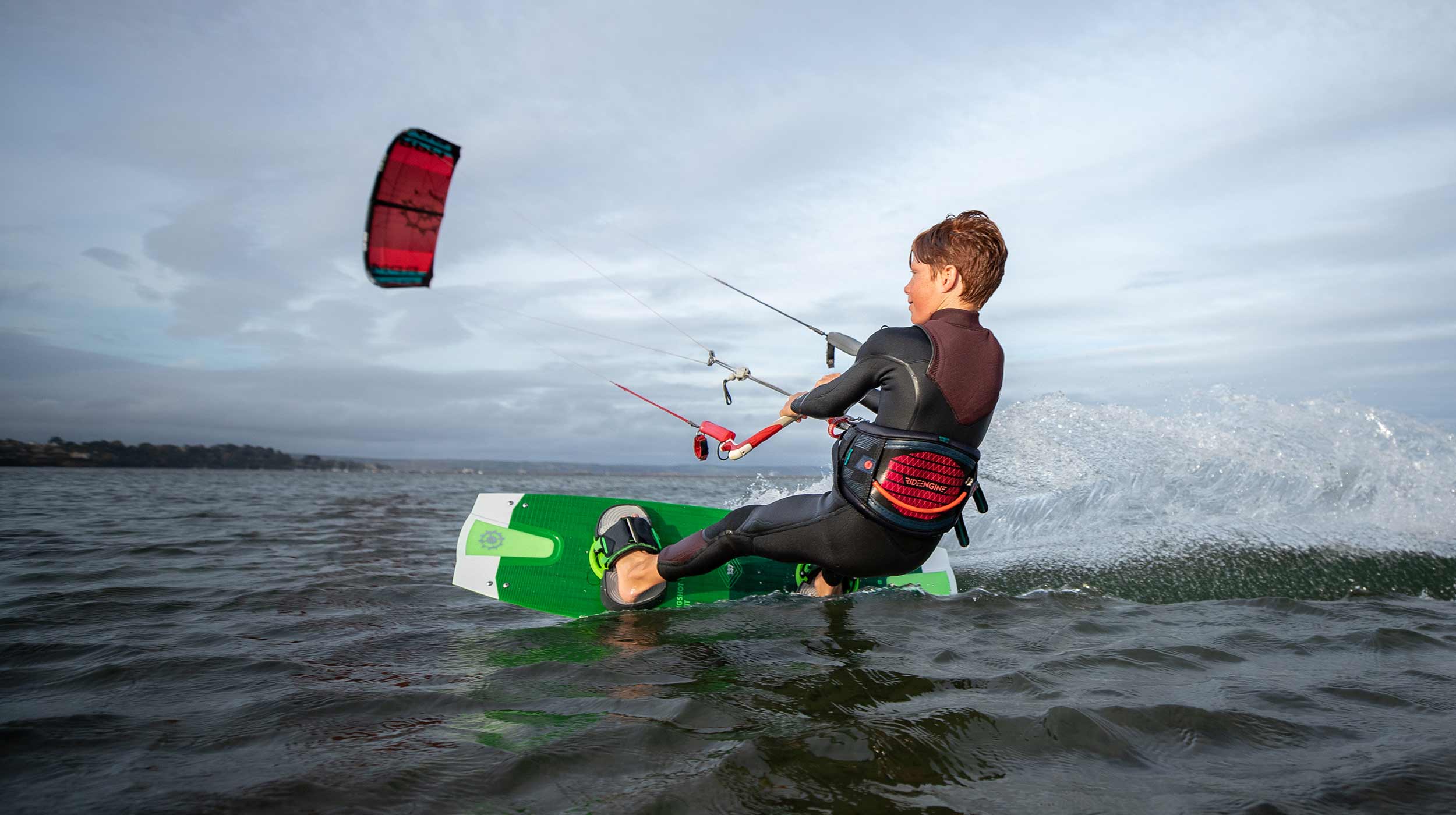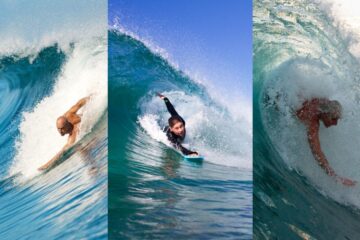Looking for a new way to ride the waves? Kite surfing allows you to surf without a traditional surfboard, using only a small floatable board attached to your feet.
By using fins for stability and propulsion, kite surfers can catch waves and carve across the face or barrel through the curl. Kite surfing requires less equipment and space than regular surfing but still demands balance, wave sense, and proper technique.
With practice, you’ll be shredding waves in no time! Give this up-and-coming sport a try for surfing fun anywhere there are waves.
The History of Kite Surfing
Kite surfing originated in the late 20th century, evolving from experiments with kite-powered skiing. Key milestones include the 1984 patent by the Legaignoux brothers for the inflatable kite design, crucial for water relaunch, marking the sport’s official birth and rapid development into a global phenomenon.
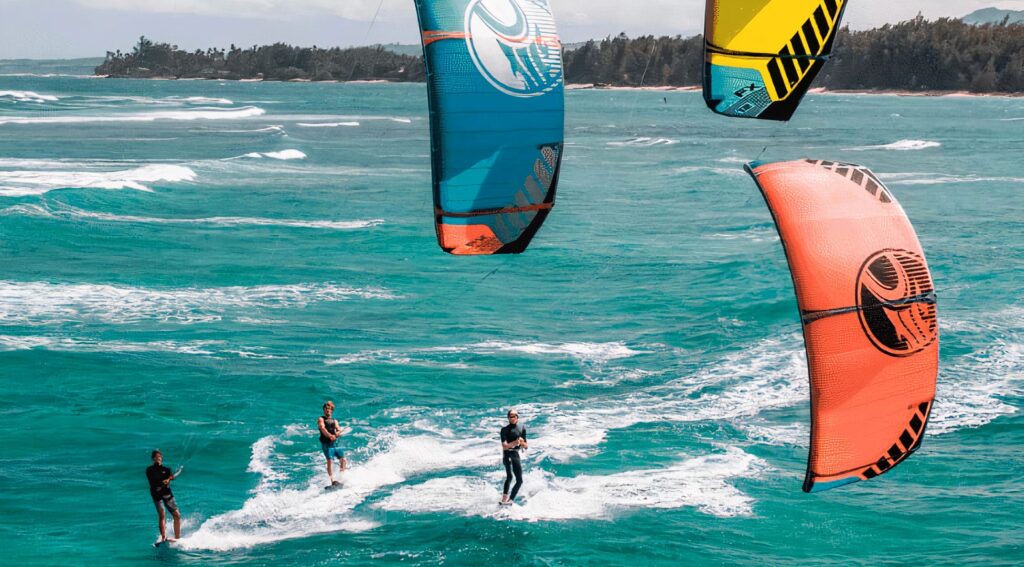
What Is Kite Surff?
Kite surfing is a water sport where you ride on a board and use a large kite to catch the wind, which pulls you across the water. It’s like surfing but with a kite in the sky that moves you. It’s fun and lets you glide over waves and even jump into the air.
How To Kite Surf?
before you grab a kite and board, let’s break down the steps to get you started safely and smoothly.
Step 1: Safety First!
- Rule #1: Always learn with a certified instructor. They’ll teach you proper techniques and safety protocols.
- Gear Up: Harness, helmet, board, and kite. Your instructor will guide you in choosing the right equipment.
- Practice on Land: Learn how to control the kite safely on land before hitting the water.
Step 2: Kite Control is Key!
- Master the Basics: Learn how to steer the kite left, right, up, and down using the control bar.
- Feel the Wind: Practice feeling the wind’s power and adjusting your kite accordingly.
- Safety Systems: Understand how to use the safety leash and depower system to stop the kite in an emergency.
Step 3: Water Time!
- Shallow Start: Begin in shallow, calm water where you can stand comfortably.
- Body Drag: Practice getting dragged by the kite while lying down on your board, feeling its pull.
- Water Start: Learn the technique to stand up on the board with the kite’s power. Your instructor will guide you through this!
Step 4: Progressing with Practice!
- Master Turning: Learn how to turn your board left and right by shifting your weight and using the kite.
- Stopping: Practice slowing down and stopping safely using the kite’s depower system.
- Upwind Riding: Learn how to go against the wind, opening a whole world of possibilities!
Remember: Kitesurfing takes time and practice. Don’t get discouraged! Be patient, have fun, and most importantly, prioritize safety by always learning with a certified instructor.
Pro Tip: Watch professional kitesurfers online for inspiration, but remember, their skills take years to develop! Focus on your own progress and enjoy the journey.
With dedication and the right guidance, you’ll be carving waves and soaring through the wind in no time!
Is Kit Surfing Dangerous?
Yes, kite surfing can be dangerous. Kite surfing involves using a large kite to catch the wind and pull you across the water on a board. Like any sport, especially those involving water and speed, there are risks. However, understanding these risks and preparing properly can make kite surfing safer and more enjoyable.
How to Stay Safe While Kite Surfing:
- Take Lessons: Always start with professional lessons to learn the basics and safety techniques.
- Use Proper Gear: Wear a helmet, and life jacket, and use a kite with a safety release system.
- Check the Weather: Only kite surf in suitable weather conditions. Avoid strong winds and storms.
- Know Your Limits: Don’t try advanced moves or go into deep water until you’re ready.
- Stay Alert: Keep an eye on the wind, waves, and other surfers to avoid collisions.
By following these guidelines, you can enjoy kite surfing while minimizing the dangers. Remember, being prepared and cautious is key to having fun safely on the water.
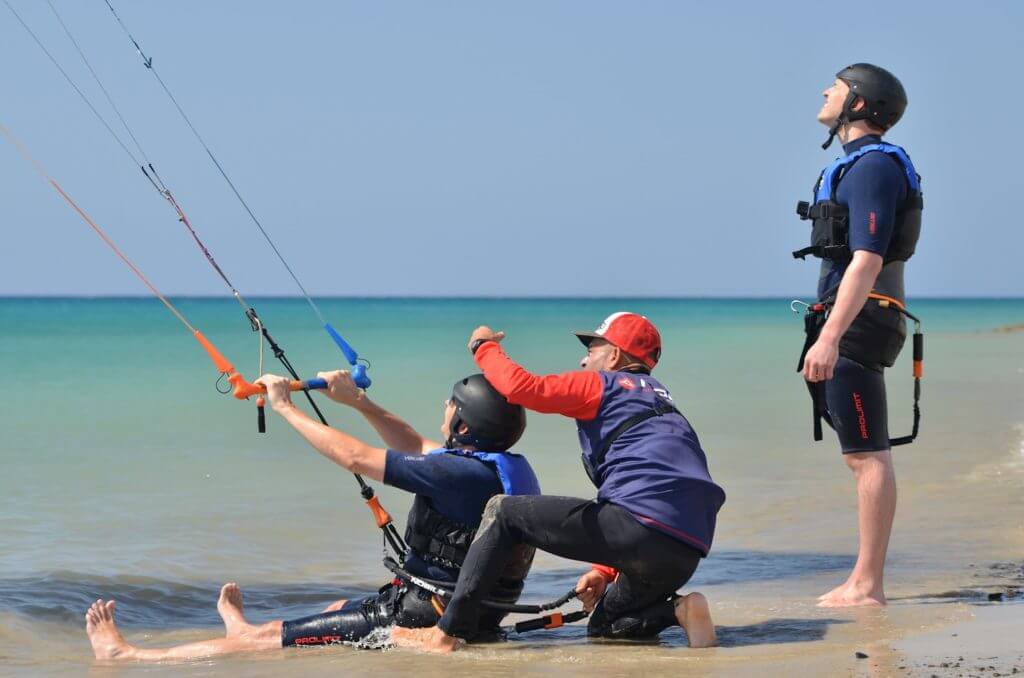
How Long Does It Take To Learn Kite Surfing?
Learning kite surfing can take from a few days to a few months, depending on how quickly you pick up new skills and your previous experience with similar sports.
Kite surfing combines elements of surfing, windsurfing, and flying a kite. How fast you learn depends on various factors:
Key Factors Affecting Learning Time:
- Previous Experience: If you’ve done similar sports, you might learn faster.
- Consistency: Regular practice speeds up learning. A few hours each week can make a big difference.
- Quality Instruction: Learning from a professional instructor can help you master the basics more quickly and safely.
- Weather Conditions: Ideal wind and water conditions are crucial for practice. Bad weather can delay your progress.
Typical Learning Phases:
- Understanding the Kite: Learning to control the kite on land takes about 2-3 days.
- Water Practice: Getting comfortable with the kite in the water might take another 2-5 days.
- Riding: Starting to ride the board and practicing basic maneuvers can take a few weeks to months of consistent practice.
Everyone learns at their own pace, so patience and persistence are key.
Can I Kit Surff Anywhere?
No, you can’t kite surf just anywhere. You need the right place with wind and water.
Kite surfing requires specific conditions to be safe and fun:
Ideal Conditions for Kite Surfing:
- Wind: A steady breeze is essential. Too little wind and you won’t move. Too much, and it can be dangerous.
- Open Water: Large bodies of water like oceans, seas, or large lakes are best. You need space away from people and obstacles.
- Safe Areas: Some places have restrictions or are too crowded. Always check local rules and choose spots known for kite surfing.
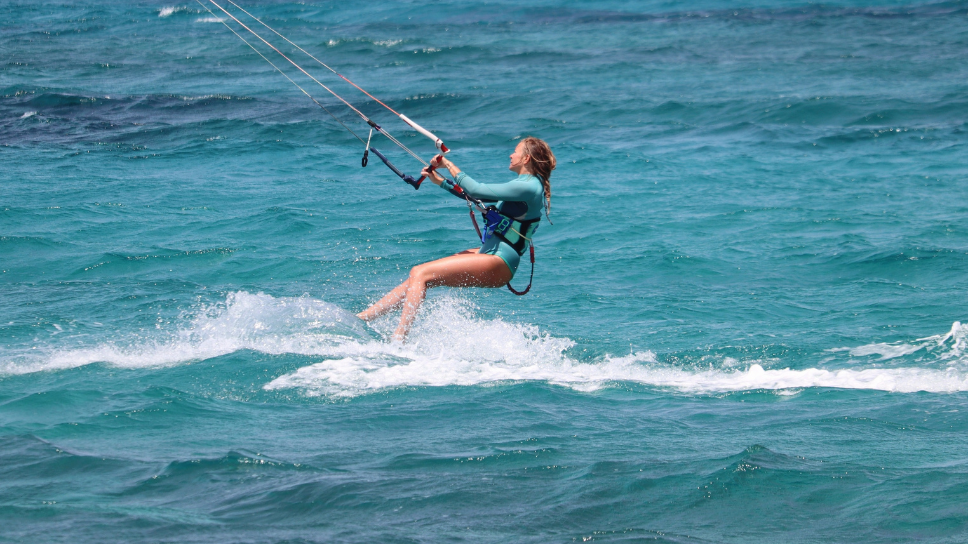
Health Benefits of Kite Surfing
Kite surfing is not just fun; it’s also great for your health.
Health Benefits of Kite Surfing:
- Full Body Workout: It strengthens your arms, legs, and core as you control the kite and balance on the board.
- Improves Balance: Riding the waves requires good balance, which can enhance your coordination and stability.
- Cardiovascular Health: It gets your heart pumping, improving heart health and stamina.
- Mental Health: Being outdoors and on the water reduces stress, boosts mood, and increases your overall happiness.
- Flexibility: Maneuvering the kite and board makes your body more flexible and agile.
Kite surfing combines exercise with the excitement of an outdoor adventure, making it a fantastic way to stay healthy and happy.
Final Thoughts
Kite surfing offers an exhilarating blend of wind and waves, providing a unique way to connect with nature while boosting physical and mental health. With proper training, safety gear, and respect for the elements, anyone can enjoy the freedom and thrill of riding the wind, making it a sport truly worth exploring.
FAQs
Kite surfing has a learning curve, especially mastering kite control and balance. With proper lessons and practice, it becomes easier and highly rewarding.
Kite surfing and surfing have different challenges. Kite surfing requires learning kite control, which can be complex. Surfing demands mastering wave timing and balance. Difficulty varies by individual.
Kite surfing is also known as kiteboarding. Both terms are used interchangeably to describe the water sport that combines elements of surfing, windsurfing, and paragliding.
Yes, almost anyone can learn to kite surf. It requires physical fitness, but age and strength are not limiting factors. Proper training and safety measures are crucial.
Kite surfers can jump remarkably high, with experienced riders reaching heights of 20 to 30 feet or more, depending on wind conditions and skill level.

